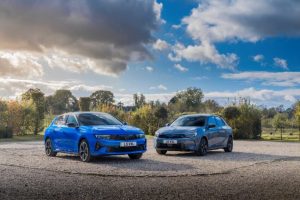ZF outlined its Software Defined Vehicle roadmap during a technical briefing at the company’s UK headquarters in Solihull. The German supplier believes SDV technology represents the next phase in electric vehicle development beyond current battery and motor advances.
ZF engineers demonstrated how Software Defined Vehicles use electronic systems to control steering, braking and suspension instead of mechanical connections. The approach mirrors aviation’s fly-by-wire systems – smart actuators and sensors manage vehicle functions through software rather than physical linkages.
The Nissan Leaf launched in 2010 with 109 miles of range and a 24kWh battery.
By 2023, the Tesla Model Y outsold the Toyota Corolla globally. EVs now match or exceed combustion engine range while delivering performance that earned vehicles like the Hyundai Ioniq 5 N recognition as World Performance Car of the Year.
Current SDV Applications
The Nio ET9 became China’s first mass-produced car with ZF’s steer-by-wire system. Nio cited faster steering response as the primary benefit – the system eliminates the traditional steering column and mechanical connections between wheel and road wheels.
At the commercial end, the Farizon SV electric van uses by-wire controls for all major inputs. Sensors, servos and control units manage steering, throttle and braking without physical connections. This reduces weight and improves packaging efficiency.
SDVs already receive over-the-air updates to enhance battery range, handling and infotainment systems. Real-time data flows back to manufacturers to identify where improvements can be made.
Performance Development
ZF supports Formula Student UK teams competing in the driverless electric category. University engineering students use ZF’s Solihull facilities to test their self-designed race cars before the annual Silverstone competition.
Students extract performance data from the previous year’s car and modify the code to optimize power delivery, steering and suspension for the current vehicle. The process involves storing data on hard drives, adjusting parameters on computers, then uploading the revised code to the car’s ECU.
ZF engineers believe this approach could eventually allow road cars to adopt different driving characteristics through software. An engineer could theoretically map a Toyota GR Yaris’s dynamics onto a different vehicle platform – though practical applications remain limited.
“Even the slightest micro oscillation from a part can have a knock-on effect to the rest of the vehicle and create a vibration,” explains Dr. David Moule, ZF technical specialist in electric drivetrains.
Efficiency Focus
ZF’s development process involves eliminating components that create vibrations affecting refinement and efficiency. Traditional approaches often required adding mass to strengthen components, but SDV systems remove heavy parts like steering columns entirely.
The company experiments with different steel grades for electric motor magnets to reduce energy loss. Even manufacturing techniques vary – motor shafts that appear identical show different microscopic ridging patterns designed for specific efficiency gains.
Digital systems replace mechanical components while tracking real-time performance data.
Weight reduction improves range, efficiency and refinement. Dr. Moule describes this as creating “a virtuous circle as everything is working together in a more efficient way than before.”
Architecture Evolution
SDVs built before 2022 relied on multiple decentralized ECUs positioned around the vehicle floor. Current models through 2030 use three main control modules at the front, middle and rear sections with fewer individual ECUs.
ZF projects that 2030 SDVs will operate with just three centralized electronic zones – front, central and rear architecture.
Major manufacturers including BMW, Volkswagen, Skoda and Cadillac are integrating ZF’s SDV technology into upcoming models. The systems enable continuous over-the-air improvements while reducing the physical complexity that has defined automotive engineering for decades.
The shift from mechanical to software-controlled systems represents the automotive industry’s response to demands for improved efficiency, performance and the ability to update vehicle capabilities throughout ownership.





